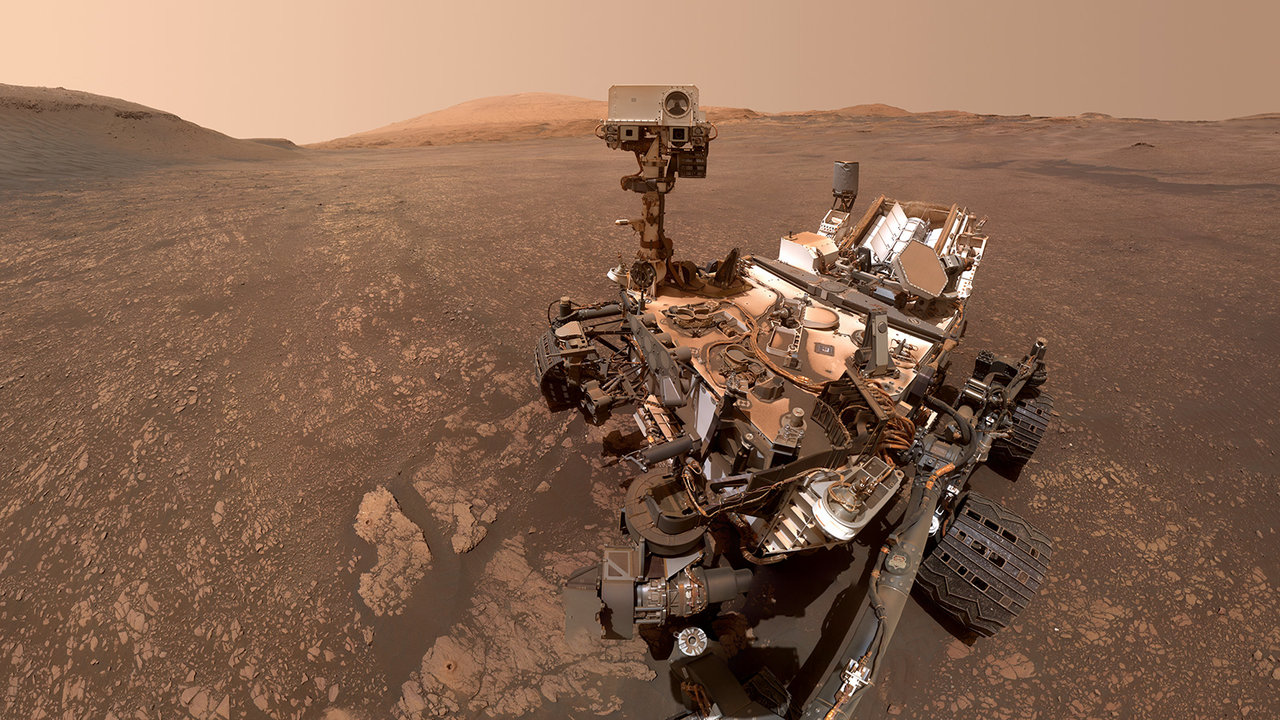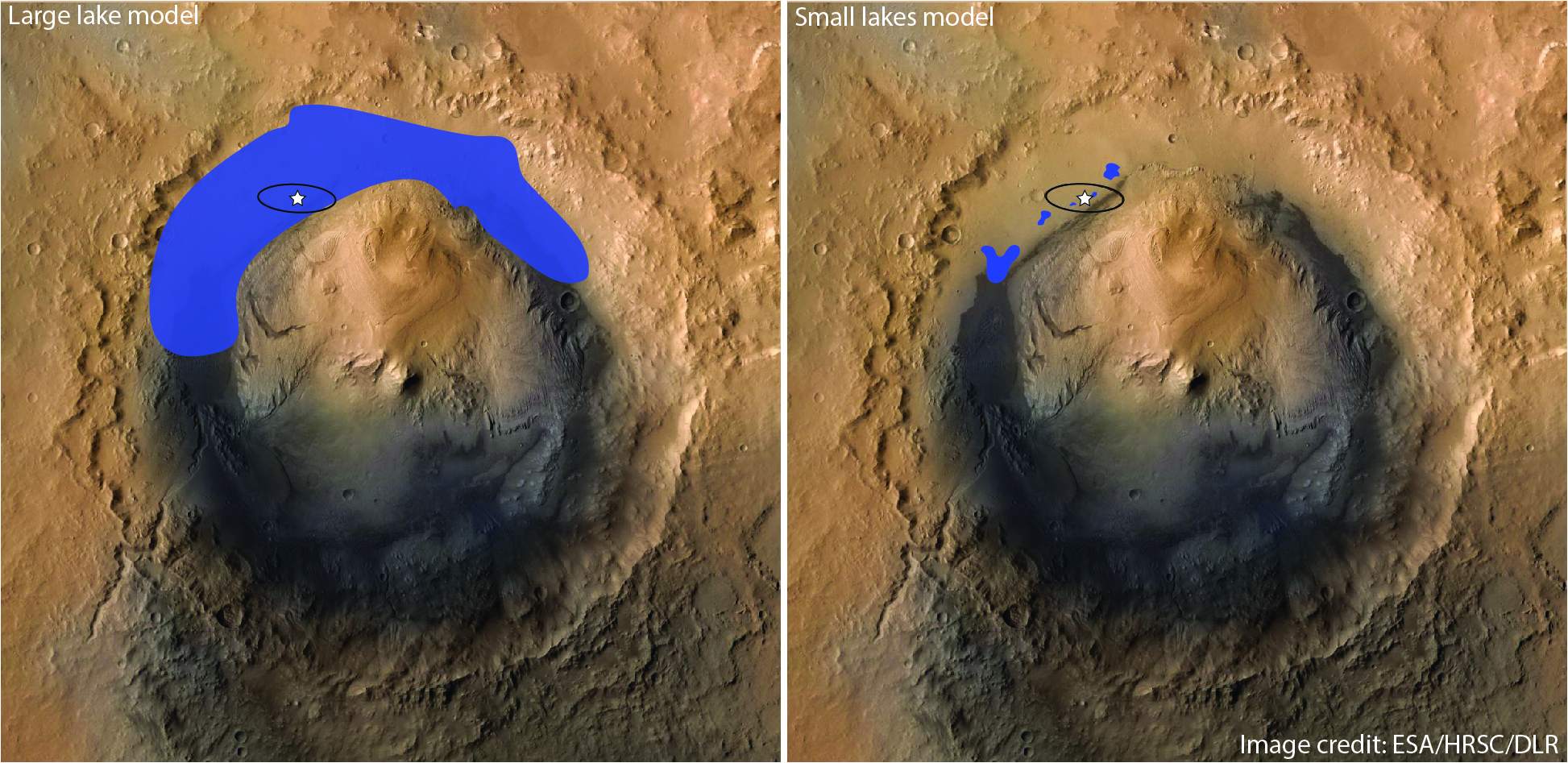
Mars' Gale Crater may not have been so wet after all, a new study suggests.
NASA's Curiosity rover touched down inside the 96-mile-wide (154 kilometers) Gale in August 2012, on a mission to assess the area's past life-supporting potential.
At a spot near its Mars landing site called Yellowknife Bay, the car-sized robot found fine-grained "mudstone" sediments — strong evidence of an ancient lake. As it roamed the crater over the ensuing months and years, Curiosity spotted more and more signs of past liquid water, leading the rover team to conclude that Gale hosted a big lake about 3.7 billion years ago.
Related: Amazing Mars photos by NASA's Curiosity rover
"This lake was large enough it could have lasted millions of years — sufficient time for life to get started and thrive, sufficient time for lake sediments to build up and form Mount Sharp," Michael Meyer, Mars Exploration Program lead scientist at NASA Headquarters in Washington, said during a press conference in December 2014.
Mount Sharp is the giant mound that rises about 3.4 miles (5.5 kilometers) into the Martian sky from Gale's center. Its existence is one of the reasons NASA sent Curiosity to Gale: Since September 2014, the rover has been rolling up the mountain's slopes, reading its many rock layers for clues about Mars' changing climate history.
A new study, however, offers a different interpretation of Curiosity's data and Gale's past.
Get the Space.com Newsletter
Breaking space news, the latest updates on rocket launches, skywatching events and more!
While the Yellowknife Bay mudstones likely were deposited in an ancient lake, the "majority of the stratigraphic section corresponds to sandstone and interbedded mudstone-sandstone, which are intensely weathered but likely not lacustrine [lake-related] in origin based on the suite of sedimentary structures, mineralogy and geochemical trends observed as a geological formation," researchers led by Hong Kong University (HKU) doctoral student Jiacheng Liu wrote in the paper, which was published today (Aug. 6) in the journal Science Advances.
Liquid water caused that weathering, but it didn't occur in a lake, Liu and his colleagues suggest. They propose a different scenario: Most of the deposits examined by Curiosity came into the crater via wind and/or volcanic activity, then were altered by acidic rain.
"This is probably precipitation-driven chemical weathering of a soil-type environment," study co-author Joe Michalski, deputy director of the HKU's Laboratory for Space Research and Liu's doctoral advisor, told Space.com.
The data gathered by Curiosity, which is still going strong today, point to the existence of a handful of small lakes in Gale long ago rather than a single big one, Michalski said. Those little lakes were probably relatively transient, persisting for a maximum of a few tens of thousands of years at a time, he added.

If Liu, Michalski and fellow HKU co-author Mei-Fu Zhou — none of whom are members of the Curiosity mission team — are right, then it may have been tougher for life to get going at Gale than scientists had thought. The larger and longer-lasting that a life-conducive environment is, after all, the better the chance that chemistry will produce something complex and interesting there.
There are other consequences of this interpretation as well. For example, it pegs Gale Crater as less of an outlier than generally believed, and therefore more representative of ancient Mars as a whole. And that's an exciting prospect, Michalski said.
"That means that we understand the environmental conditions in a broader sense, by looking at something that's much more average," he said.
We could get some more clarity on the Gale lake question relatively soon, Michalski added, courtesy of Curiosity's cousin Perseverance. Perseverance touched down this past February on the floor of Mars' 28-mile-wide (45 km) Jezero Crater to hunt for signs of ancient life and collect samples for future return to Earth, among other tasks. (Perseverance is now collecting its very first Red Planet sample, as a matter of fact.)
Jezero's floor definitely hosted a sizable, if transient, lake long ago, Michalski said.
"I suspect that the sediments will be different," he said. "So, we'll be able to look at those two things side by side and say, 'OK, mate: Here's what we see in a lake, and here's what we see in Gale. And they don't look the same.'"
Mike Wall is the author of "Out There" (Grand Central Publishing, 2018; illustrated by Karl Tate), a book about the search for alien life. Follow him on Twitter @michaeldwall. Follow us on Twitter @Spacedotcom or Facebook.
Join our Space Forums to keep talking space on the latest missions, night sky and more! And if you have a news tip, correction or comment, let us know at: community@space.com.

Michael Wall is a Senior Space Writer with Space.com and joined the team in 2010. He primarily covers exoplanets, spaceflight and military space, but has been known to dabble in the space art beat. His book about the search for alien life, "Out There," was published on Nov. 13, 2018. Before becoming a science writer, Michael worked as a herpetologist and wildlife biologist. He has a Ph.D. in evolutionary biology from the University of Sydney, Australia, a bachelor's degree from the University of Arizona, and a graduate certificate in science writing from the University of California, Santa Cruz. To find out what his latest project is, you can follow Michael on Twitter.









